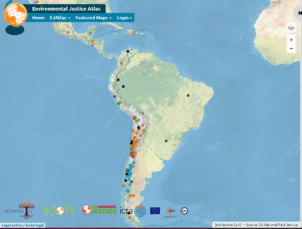
By Teresa Sanz & Beatriz Rodríguez-Labajos.
Teresa Sanz
- Institute of Environmental Science and Technology, Universitat Autònoma de Barcelona, Campus de la UAB, 08193, Cerdanyola del Vallès, Barcelona, Spain
Beatriz Rodríguez-Labajos
- Johns Hopkins University-Universitat Pompeu Fabra Public Policy Center, Universitat Pompeu Fabra (UPF), 08002, Barcelona, Spain
- UPF Barcelona School of Management, Barcelona, Spain
- Energy and Resources Group, University of California, Berkeley, USA
Open access to this article at Springer Link.
Abstract
This paper aims to unpack the relational dimension of place and placemaking by analysing how creative actions underpin relational values towards socio-spatial restoration in the sacrifice zone affecting the communities of Quintero and Puchuncaví (QPSZ) in Chile. Sacrifice zones are places permanently subject to environmental damage and lack of environmental regulation. For affected populations in environmentally degraded areas, creative actions such as murals, music, and street performances have become a way to re-establish connections both among humans, and between humans and the environment. To date, little has been theorized on this connection. With this in mind, we use network analysis to analyze which and how relational values are mobilized by artistic actions, and to examine ensuing socio-spatial transformations. Drawing insights from 35 interviews with activists, artists, and residents in QPSZ, we observed relational effects of arts, especially in creation processes, and in representations of local elements and life histories. The materiality of artistic practices raised as a force of placemaking, and so did artistic spaces as promoters of networking and social cohesion, essential for socio-spatial restoration. By bringing together insights from aesthetic politics, human geography, and relational values, this paper contributes to the emerging literature on art committed to tackling socio-environmental crises, and to political–ecological theories on the transformation of degraded areas.
https://doi.org/10.1007/s11625-022-01252-6

The project ENVJUSTICE has received funding from the European Research Council (ERC) under the European Union’s Horizon 2020 research and innovation programme (grant agreement No. 695446)